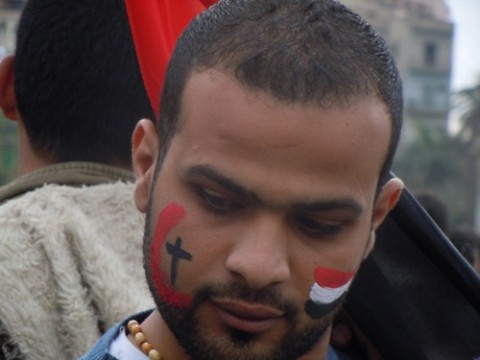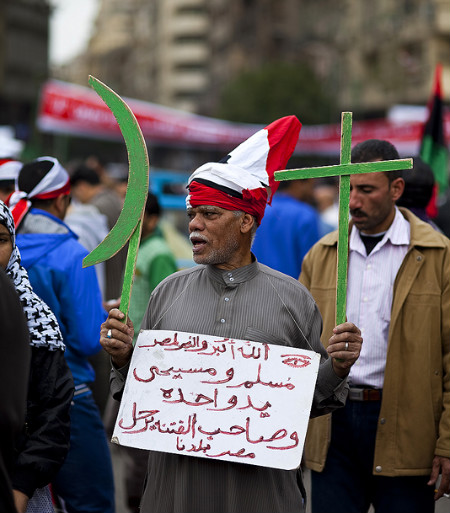Clashes and coalitions: Christians and Muslims in Egypt

On March 11, the one-month
anniversary of former President Mubarak's resignation, thousands of Egyptians
took to the streets of Cairo, Port Said and Alexandria to celebrate national
unity and condemn sectarianism. The march was called by the same youth
coalition that launched the revolution. This time their slogan was "No to
sectarian strife."
Egyptians from all spectrums of
society were waving flags and banners reading "Muslims and Christians are one."
Hundreds of people held up crosses and copies of the Qur'an, chanting
"Christians and Muslims are one hand." Around the country, Muslim imams
addressed religious harmony in their Friday sermons. In Cairo's Tahrir Square, an
army general stood on the makeshift platform and lifted high the cross and the
Qur'an, saying to the massive crowed, "The crescent and the cross are one. We
are all Egyptians, Muslim and Christian." In the now world-famous square,
Muslims and Christians prayed together for the unity and safety of Egypt.
It was a peaceful and profoundly
heartwarming day. Yet these unity marches came after days of sectarian violence
in Egypt that included the burning of a church south of Cairo and clashes
between hundreds, if not thousands, of young Christians and Muslims. In an
impoverished Cairo suburb, 13 people were killed and more than 140 injured.




